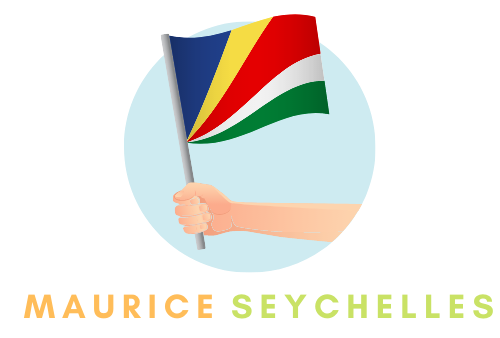In a world where digital screens increasingly mediate our interactions, the ancient art of reading body language remains an indispensable tool for understanding human connection. Observing the subtle shifts in posture, the flicker of an eye, or the unconscious crossing of arms can reveal far more than words ever could. As we navigate modern trends in social behavior, the ability to interpret these non-verbal signals has never been more crucial, bridging the gap between what is said and what is truly felt.
Decoding non-verbal signals in contemporary social settings
The way we communicate without uttering a single word has undergone remarkable transformation over recent decades. While the fundamentals of body language remain rooted in our evolutionary past, the contexts in which we deploy and interpret these signals have shifted dramatically. Today’s social landscape demands a nuanced understanding of how gestures, facial expressions, and physical proximity convey meaning, whether we are meeting someone face-to-face in a bustling café or attempting to read cues through a video call screen.
The Evolution of Body Language in Digital-Age Interactions
The rise of virtual communication platforms has introduced fascinating challenges and adaptations in how we express and perceive non-verbal communication. When conversations migrate from physical spaces to digital screens, many traditional cues become obscured or altered. The camera angle, lighting, and even internet connection quality can distort the subtle signals that once helped us suss out genuine emotion from polite pretence. Yet humans have proven remarkably adaptable, developing new strategies to convey warmth, interest, and authenticity even through the constraints of technology.
Research into mirror neurons has illuminated why these adaptations feel so instinctive. These specialised brain cells activate both when we perform an action ourselves and when we observe someone else performing the same action. This neural mirroring forms the foundation of empathy and emotional recognition, allowing us to simulate what others experience and thereby understand their internal states. When we watch someone smile during a video call, our mirror neurons fire as though we were smiling ourselves, creating a visceral connection that transcends the digital divide. Brain areas beyond the motor regions, including the visual cortex and frontal lobes, work together to process these emotional actions, demonstrating how deeply woven non-verbal understanding is into our neurological architecture.
The concept of embodied cognition further enriches our appreciation of body language evolution. This perspective suggests that language and understanding are fundamentally grounded in sensory and motor experiences rather than existing as abstract symbols detached from physical reality. When someone describes feeling ‘under pressure’ or ‘grasping a concept’, their brain activates areas associated with physical touch and hand movements. This neurological reality means that even in digital-age interactions, our bodies remain essential interpreters of meaning, translating words and images into felt experience.
Reading posture and gestures amongst today’s social circles
Contemporary social settings present unique opportunities to observe how posture and gestures reflect underlying emotional states and intentions. Whether in a professional meeting, a casual gathering at a local pub, or even a carefully curated social media presence, individuals constantly transmit information about their comfort, confidence, and connection to those around them. An upright posture with relaxed shoulders typically signals openness and engagement, whilst crossed arms and a turned-away torso might indicate defensiveness or discomfort, though context always matters tremendously.
The phenomenon of mimicry offers particularly revealing insights into social dynamics. When people feel genuine affinity, they unconsciously mirror each other’s movements and postures. This synchronisation happens automatically, driven by the same mirror neuron systems that facilitate emotional recognition. Observing two friends in conversation, you might notice how they adopt similar sitting positions, match each other’s gestures, or even synchronise their breathing patterns. This physical harmony reflects psychological rapport, and its presence or absence can indicate the true quality of a relationship far more accurately than any verbal declaration.
Facial expressions carry profound weight in social interaction, with humans demonstrating remarkable skill at reading emotion from even the briefest glimpse of another person’s face. Infants as young as five months can match emotional body movements to corresponding vocal sounds, suggesting that this ability is deeply rooted in our developmental blueprint. As we mature, our expertise deepens, allowing us to distinguish between a genuine smile that engages the muscles around the eyes and a polite smile that involves only the mouth. Eye contact patterns similarly reveal volumes about attention, interest, and emotional state, with sustained but comfortable eye contact generally signalling engagement whilst averted gaze might indicate discomfort, deception, or simply cultural norms that discourage direct staring.
Practical Applications of Body Language Analysis in Modern Society
Understanding non-verbal signals extends well beyond academic curiosity, offering tangible benefits in navigating the complexities of both personal and professional life. The ability to accurately interpret body language can transform how we build relationships, negotiate agreements, and respond to conflict. This skill proves particularly valuable in an era characterised by rapid communication and fleeting interactions, where first impressions form within seconds and opportunities for deeper understanding may be limited.
Sussing out authentic connections through physical cues
Establishing genuine connections in modern social environments requires discernment about who truly wishes to engage and who merely goes through the motions of politeness. Several physical indicators can help distinguish authentic interest from perfunctory interaction. When someone genuinely wishes to connect, they tend to lean slightly forward, adopting an open body position with uncrossed arms and legs. Their gestures become more animated, and their pupils may dilate as a physiological response to engagement and interest. Head nodding occurs naturally as they process what you say, signalling active listening rather than passive waiting for their turn to speak.
The proximity someone maintains also speaks volumes about their comfort and interest. Those who feel drawn to you will unconsciously reduce physical distance, finding reasons to move closer or position themselves within your personal space without causing discomfort. They increase eye contact when you speak, demonstrating focus and valuing your contribution to the conversation. This constellation of signals creates an unmistakable feeling of mutual connection that transcends what any single gesture could convey.
Conversely, signs of disengagement or discomfort manifest through contrasting behaviours. A person who wishes to disengage might angle their body towards an exit, maintain rigid posture, or create physical barriers by placing objects between themselves and others. Their eye contact becomes sporadic or avoidant, and their gestures remain minimal and controlled. Recognising these cues allows for graceful navigation of social situations, whether that means giving someone space or gently steering conversation towards more comfortable topics.

Navigating professional and personal relationships via non-verbal communication
The workplace presents particularly complex terrain for body language interpretation, as professional norms often require masking genuine feelings behind layers of courtesy and propriety. Yet beneath this veneer, physical cues continue to reveal authentic reactions and attitudes. During business meetings, observing who leans forward during presentations, who makes notes with engaged concentration, and who exhibits jerky movements or random limb shifts can indicate not only individual interest but also emerging conflicts or tensions within the group.
Indicators of conflict and hostility deserve special attention in professional contexts, as early recognition allows for intervention before situations escalate. Jerky movements and sudden shifts in posture often accompany rising tension, as does an indirect eye gaze that shows more of the whites of the eyes than usual. Facial flushing represents another physiological response to emotional arousal, whether from anger, embarrassment, or anxiety. When these signals appear, skilled communicators can adjust their approach, perhaps by acknowledging concerns directly or by taking a break to allow emotions to settle.
The question of detecting dishonesty through body language remains both fascinating and fraught with complexity. Whilst certain patterns correlate with deception, no single gesture definitively proves someone is lying. Those attempting to deceive often exhibit tense bodies with restricted movement, as cognitive resources focus on maintaining the fabrication rather than on natural physical expression. Blinking patterns may shift, with some individuals blinking less frequently during the act of lying, around seven to ten times per minute compared to the typical twenty-one blinks, followed by a rebound effect of increased blinking afterwards. However, caution is essential, as skilled deceivers, particularly those with psychopathic traits who may occupy senior leadership positions, can mask these tells effectively. Research has suggested that roughly one in five senior managers possess clinically significant psychopathic traits compared to approximately one in a hundred in the general population, making blanket assumptions about body language and honesty potentially misleading in high-stakes professional environments.
Building trustworthiness through non-verbal communication involves consistency between words and actions, maintaining appropriate eye contact, and demonstrating openness through relaxed posture and uncrossed limbs. Avoiding excessive hand or face touching, which can signal nervousness or discomfort, helps establish credibility. Leaning slightly towards conversation partners rather than away conveys interest and confidence. These subtle adjustments accumulate into an overall impression of reliability and authenticity that facilitates stronger professional relationships and more effective collaboration.
Personal relationships similarly benefit from heightened awareness of non-verbal dynamics. The gesture systems we employ when communicating with loved ones carry emotional weight beyond their semantic content, with the motor system engaging not only in action understanding but also in perceiving emotional states through body postures and facial gestures. The connection between mouth mirror neurons and the limbic circuit creates a distinct pathway linking facial motor control with emotion encoding, helping us recognise emotional states and decode non-verbal signals during intimate interactions. This integrated communication system, where gestures and speech operate under unified control rather than as independent channels, means that authentic emotional expression requires alignment between what we say and how we physically present ourselves.
Future explorations of body language and social behaviour would benefit from more ecological approaches that relate language to mood, emotions, actions, and events in naturalistic settings. Integrating behavioural observations with neurophysiological techniques could extend our understanding from typical populations to those with communication disorders and mirror mechanism dysfunctions, such as individuals with autism spectrum disorder, schizophrenia, or mood disorders. Such research promises not only deeper theoretical insights but also practical applications in therapeutic and educational contexts, ultimately enriching our collective capacity for empathy, emotional intelligence, and meaningful human connection in an increasingly complex social world.
